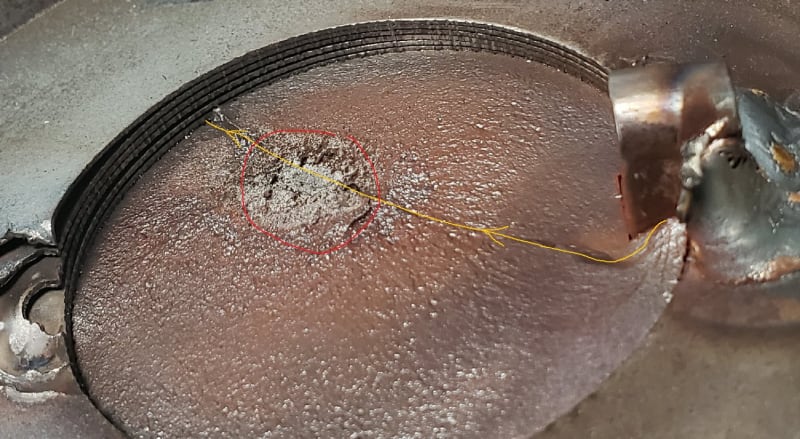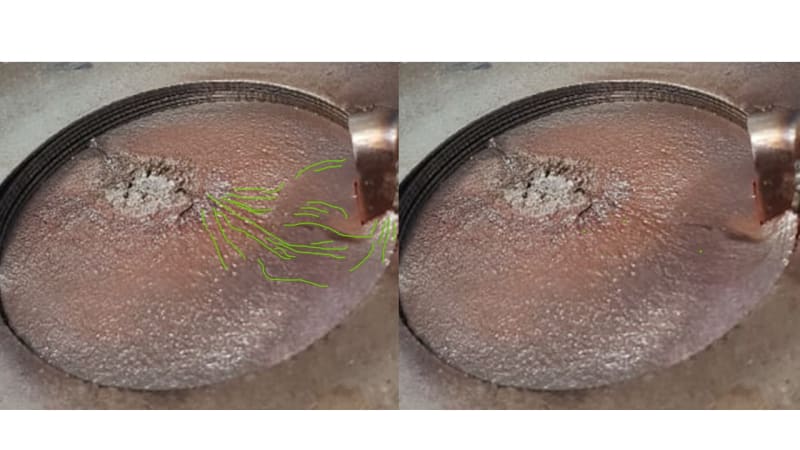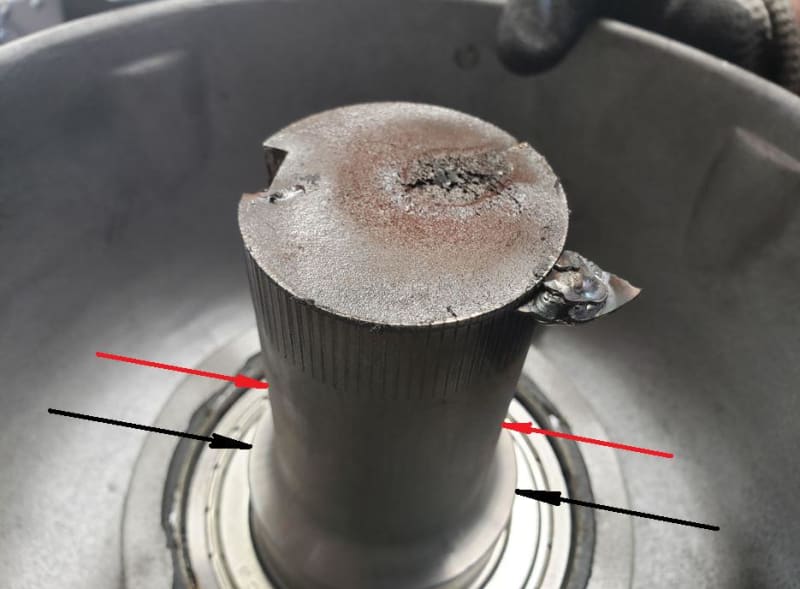Noting the requalification of the motor being from a "traction elevator"... is the output shaft
driving a pulley, or is it directly coupled? (I may have missed that answer if it was given.)
On the knurling:
Knurling is an economical way of creating an obstructing fit between the rotor laminations and shaft.
This type of fit relies upon raising the shaft surface metal to compensate for the shaft diameter being undersized for the hole it's mating with.
Hence, the additional necessary application of weld(s) in this instance... to keep the rotor in its proper location.
Typically this type of assembly is found in much smaller horsepower arrangements.
Knurled shaft fits on larger motors are usually confined to cooling fan fits, etc.
As Marke suggests, the weld points could have contributed to creating stress points,
"but" typically weld points like this are found on many motors in industry without any adverse effect.
Another observation related to the motor's design:
It's not very often the rotor/shaft portion of an electric motor is SMALLER in diameter than its working output shafts.
(They are out there. A soaking furnace motor comes to mind to name one example.)
In looking at the re-attached photo from earlier in the thread, note how the rotor is
mating with a shaft that is smaller in diameter than what is passing through the light duty
6200 series bearing heading toward the brake.
Consider how much more robust the rotor portion would be if the shaft remained the same diameter or slightly larger than the brake output shaft end.
The shaft failure appears to be "text book" rotational bending.
At this point, it's conceivable that an identical motor could be reinstalled for service, and
within a period of time have the same failure.
If a new shaft was made to replace the broken one, it would serve greatly to make it a "keyed"
press fit that would bottom against a shaft shoulder and not rely upon a couple of spot welds.
With this being a somewhat OEM motor failure, I'd suggest more input from the manufacturer
of the equipment, and the maker of the motor to learn if there is something amiss here.
John



